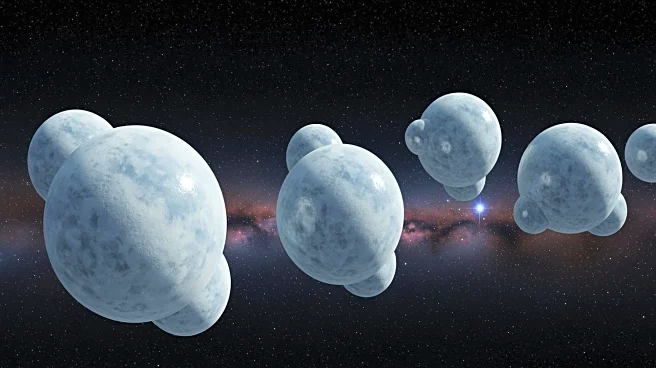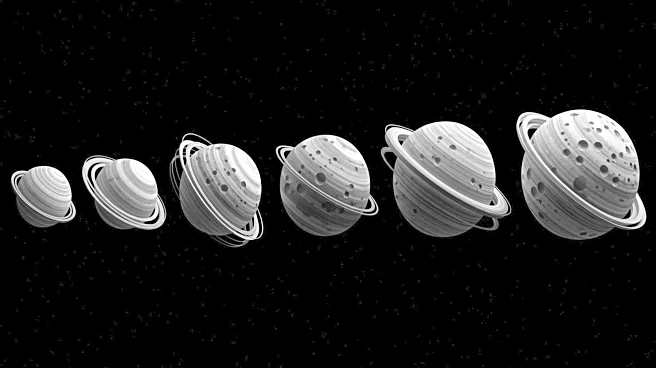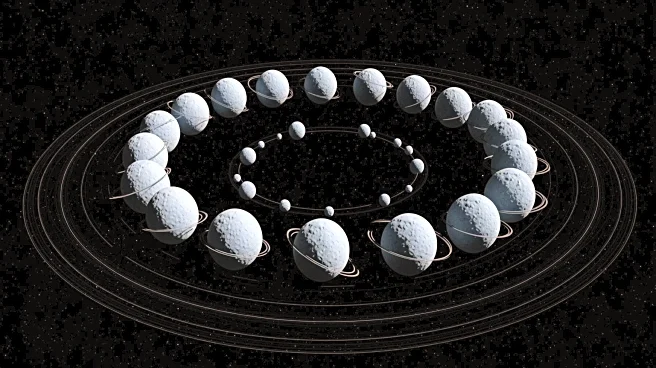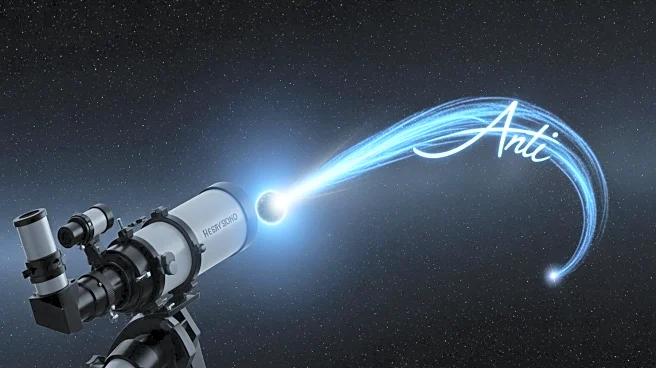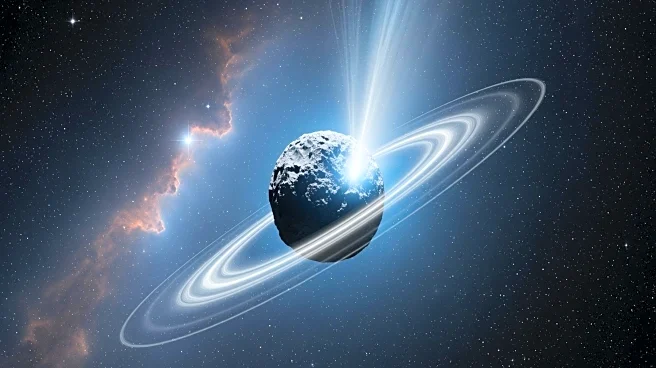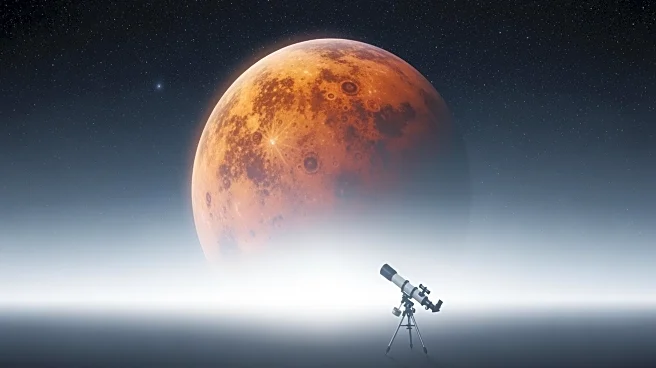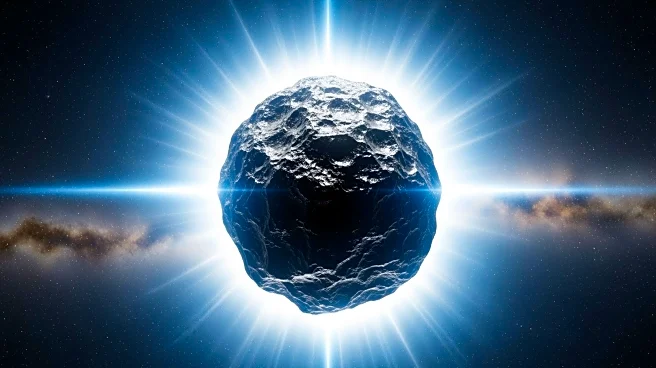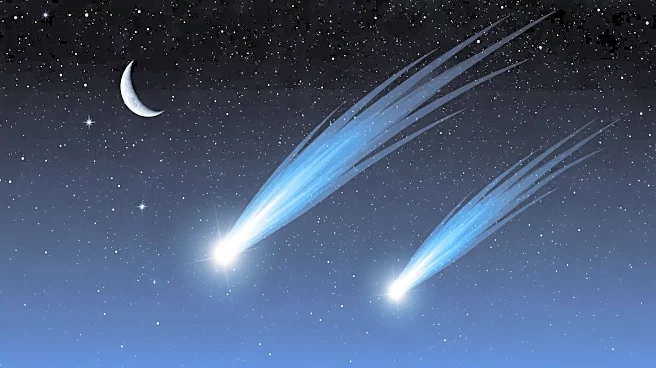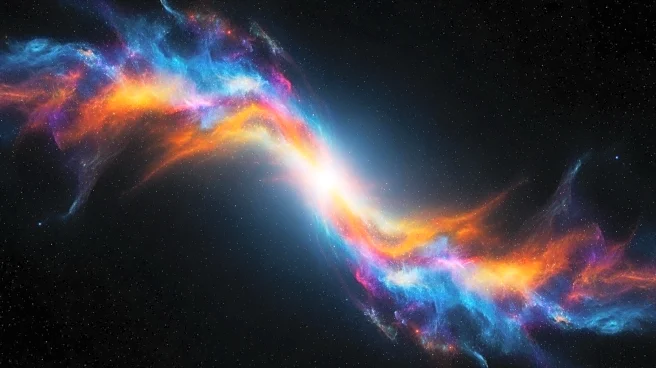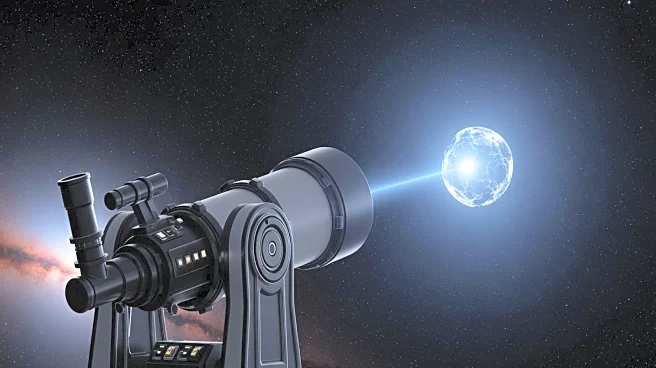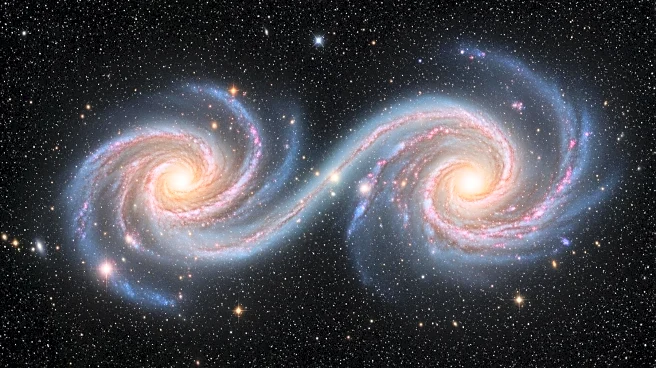What's Happening?
Recent observations by NASA's New Horizons spacecraft have revealed that small, icy bodies beyond Pluto's orbit, known as Kuiper Belt Objects (KBOs), often rotate in the opposite direction of their orbit around
the Sun. This retrograde rotation was observed in a significant number of contact binary KBOs, which are pairs of objects that have merged into a single body. The findings suggest that these objects formed through gentle collisions, rather than violent impacts, challenging existing models of planetary formation.
Why It's Important?
The unexpected rotational behavior of KBOs provides new insights into the processes that shaped the early solar system. Understanding how these distant objects formed and evolved can help refine models of planetary formation and offer clues about the conditions in the early solar system. The discovery also underscores the importance of missions like New Horizons in expanding our knowledge of the outer solar system, where direct observations from Earth are challenging due to the distance and dimness of these objects.
What's Next?
As the Vera C. Rubin Observatory continues its observations, it is expected to provide further data on KBOs, enhancing our understanding of these distant objects. Although the observatory will not capture objects as small as those studied by New Horizons, it will contribute valuable information about the broader population of KBOs. This ongoing research will help scientists refine their models of planetary formation and explore the dynamics of the outer solar system.
